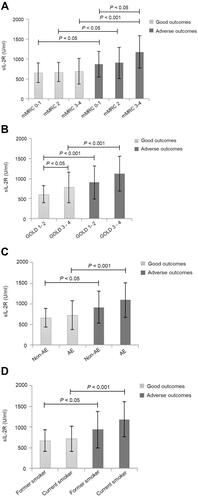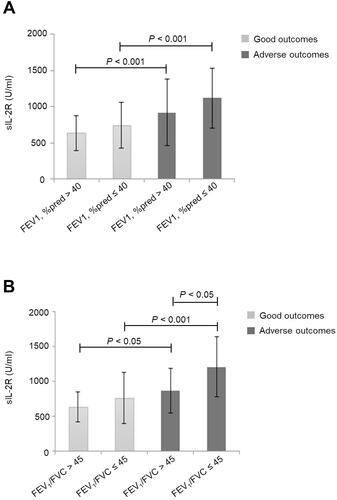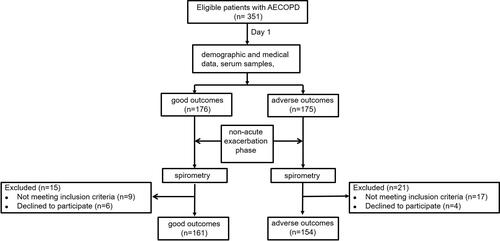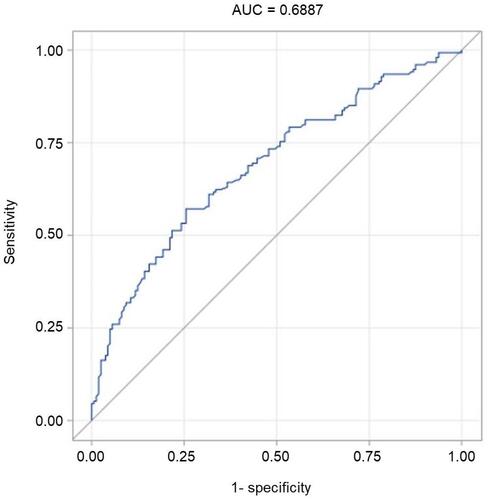Figures & data
Table 1 Baseline Clinical and Laboratory Characteristics of Study Population
Table 2 Clinical and Laboratory Characteristics According to the Tertile of sIL-2R
Table 3 Association Between sIL-2R and Adverse Outcomes in Overall Patients with AECOPD and Subgroups Stratified by Related Factors
Table 4 Relationship Between Clinical Parameters and the Serum Concentration of sIL-2R in Each Group
Figure 2 Relationship between clinical parameters and serum concentration of sIL-2R in good and adverse outcomes of AECOPD.

Figure 3 Relationship between FEV1%pred, FEV1/FVC and serum concentration of sIL-2R in good and adverse outcomes of AECOPD.

Table 5 Correlation Between sIL-2R and Other Laboratory Variables in Patients with AECOPD


